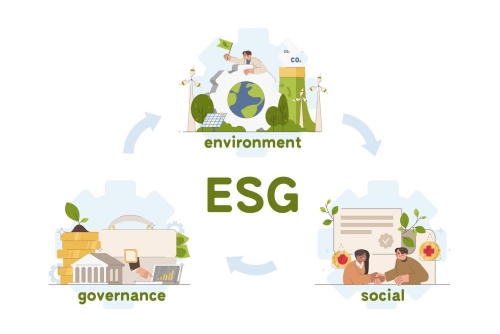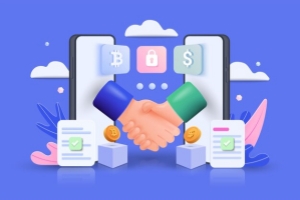The Fed Plans to Taper. Here’s What That Means
Narrator: In this market environment, the very mention of one economic term sets the big indexes on edge.
Jerome Powell: But at this point, the economy is very strong and inflationary pressures are high. And…and it is, therefore, appropriate in my view to consider wrapping up the taper of our asset purchases, which we actually announced at the November meeting perhaps a few months sooner.
Narrator: That’s the Chairman of the Federal Reserve in late November, foreshadowing that the central bank would speed up tapering or winding down of the bond-buying program it launched in 2020 to help fight the COVID-19 economic crisis. His words sent a shudder through the markets.
“Taper.”
“Tapering.”
“Tapering.”
“Taper.”
“They should be tapering.”
Narrator: And it’s easy to see why. The Fed’s stimulus has fueled a historic rally that has lifted major indexes far beyond their pre-pandemic highs. So if the economy is strong, as Powell said, and stimulus has been so good for stock portfolios, why are the markets so worried?
Here’s Jerome Powell again. This time in July of 2020, amid pandemic shutdowns that had ground the global economy to a halt.
Jerome Powell: At the Federal Reserve, we remain committed to using our tools to do what we can and for as long as it takes to provide some relief and stability.
Narrator: He was promising in part to continue purchasing $80 billion of Treasury bonds and $40 billion of mortgage-backed securities every month to increase the money supply, encourage lending and help bring the economy back from the brink. This type of stimulus is called quantitative easing. And it works like this. When the Fed buys securities on the open market, it takes them out of circulation, leaving fewer for everyone else to complete for. With less supply, investors bid up the price of the remaining securities, and as is always the case with bonds, when the price goes up, the yield goes down. So what does it mean for you?
Since treasuries are a benchmark for other types of lending, lower yields on long-term Treasury bonds can mean cheaper corporate bonds and mortgages, which can lead to more hiring and home buying throughout the economy. This helps explain why markets thrive on quantitative easing, and why they get jittery at the mention of tapering. But there are a few things to keep in mind.
First, tapering refers to winding down the rate at which the Fed adds to its balance sheet, not actually reducing the total holdings. The current plan is to reduce purchases by $30 billion a month to end in March. During this period, the Fed’s balance sheet will keep growing, just more slowly.
Second, winding down then stimulus puts the Fed in a position to focus on another of its imperatives, price stability. Here’s the former secretary of the Treasury Larry Summers talking to The Wall Street Journal’s Greg Ip.
Larry Summers: We’re now running with inflation in the 5, 6% range. And achieving the soft landing from that without recession. I think it’s not likely to be easy.
Narrator: Inflation rose to 6.8% in November from a year earlier. The fastest pace since 1982. A year and a half of stimulus has driven a rise in household income, spurring a sharp run-up in home values and other assets. This has boosted wealth for many Americans, fueling stronger demand. Meanwhile, a tight labor market and lasting supply chain issues has restricted supply, leading many businesses to raise prices. This is the big reason Powell is talking about speeding up the taper. The sooner the Fed completes the wind-down, the sooner it would be able to focus on bringing inflation back down to its 2% target.
Jerome Powell: We are committed to our price stability goal. We will use our tools, both to support the economy and a strong labor market, and to prevent higher inflation from becoming entrenched.
Narrator: On Wednesday, Fed officials signaled they were prepared to raise interest rates next year to help bring down high inflation, and some more hawkish economists see a bumpy road ahead.
Larry Summers: I think we’ve got a very difficult set of policy management challenges ahead of us with a period of entrenched inflation looking like the immediate prospect.
Narrator: But for all the Fed’s preparations, Powell says it still expects inflation could retreat on its own.
Jerome Powell: Most forecasters, including at the Fed, continue to expect that inflation will move down significantly over the next year as supply and demand imbalances abate.
Narrator: With an uncertain road ahead, the markets will continue watching the Fed for any sudden moves.















